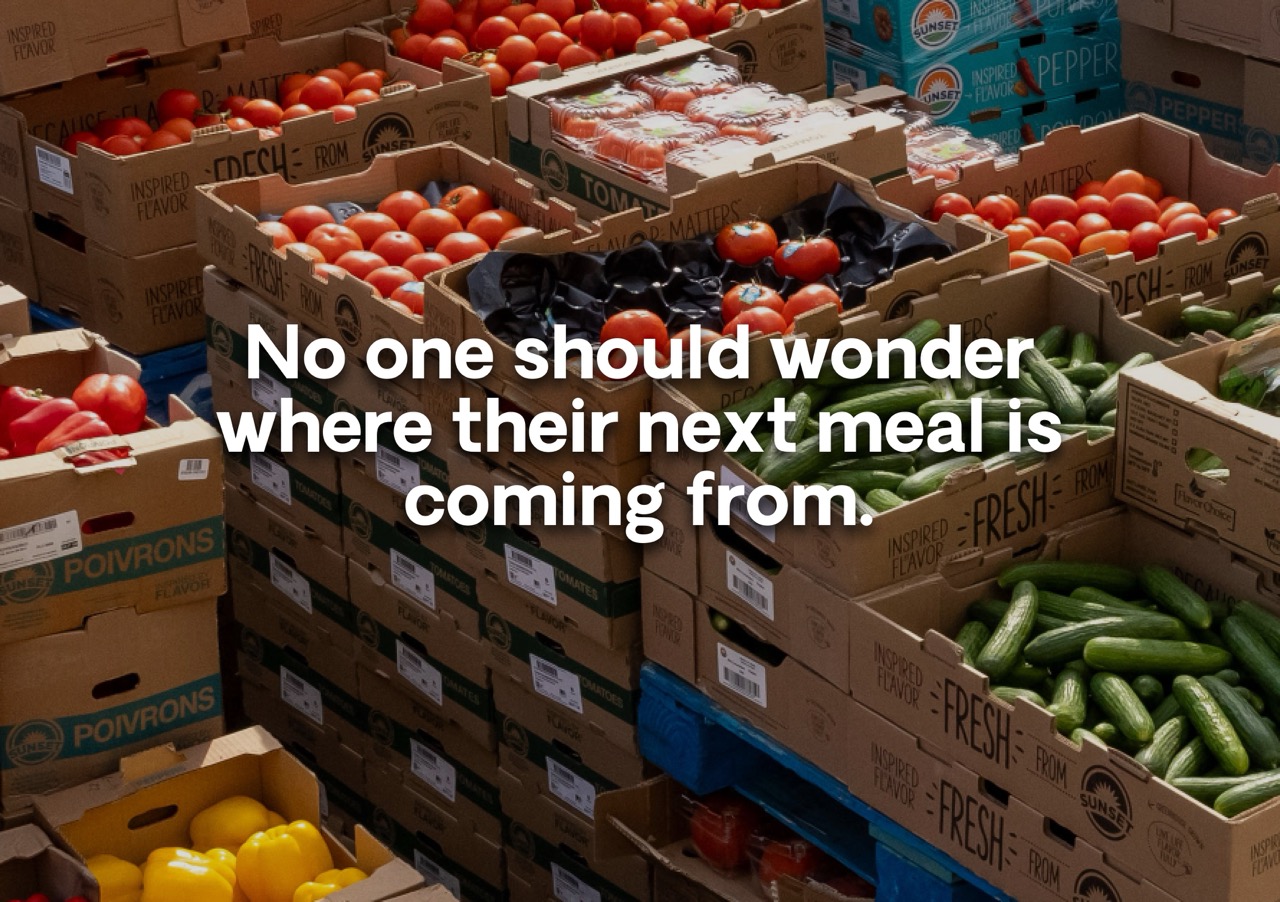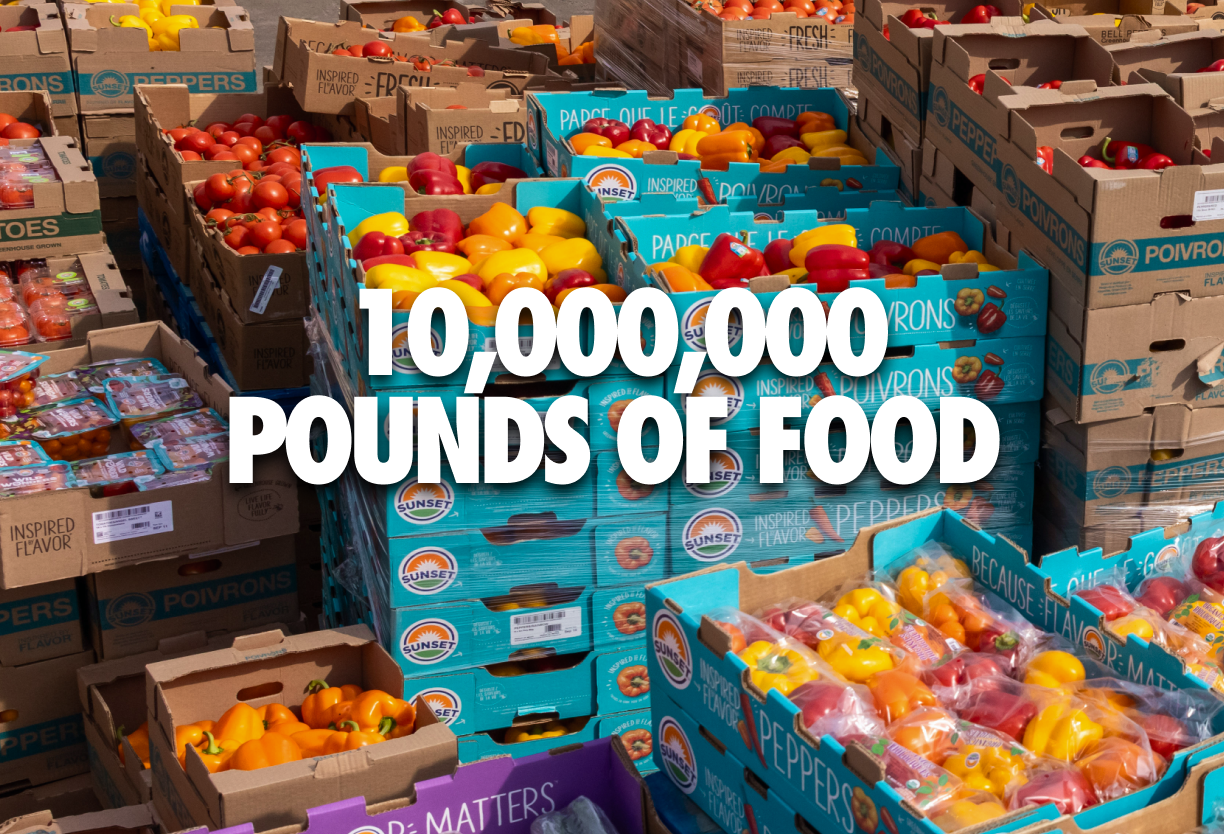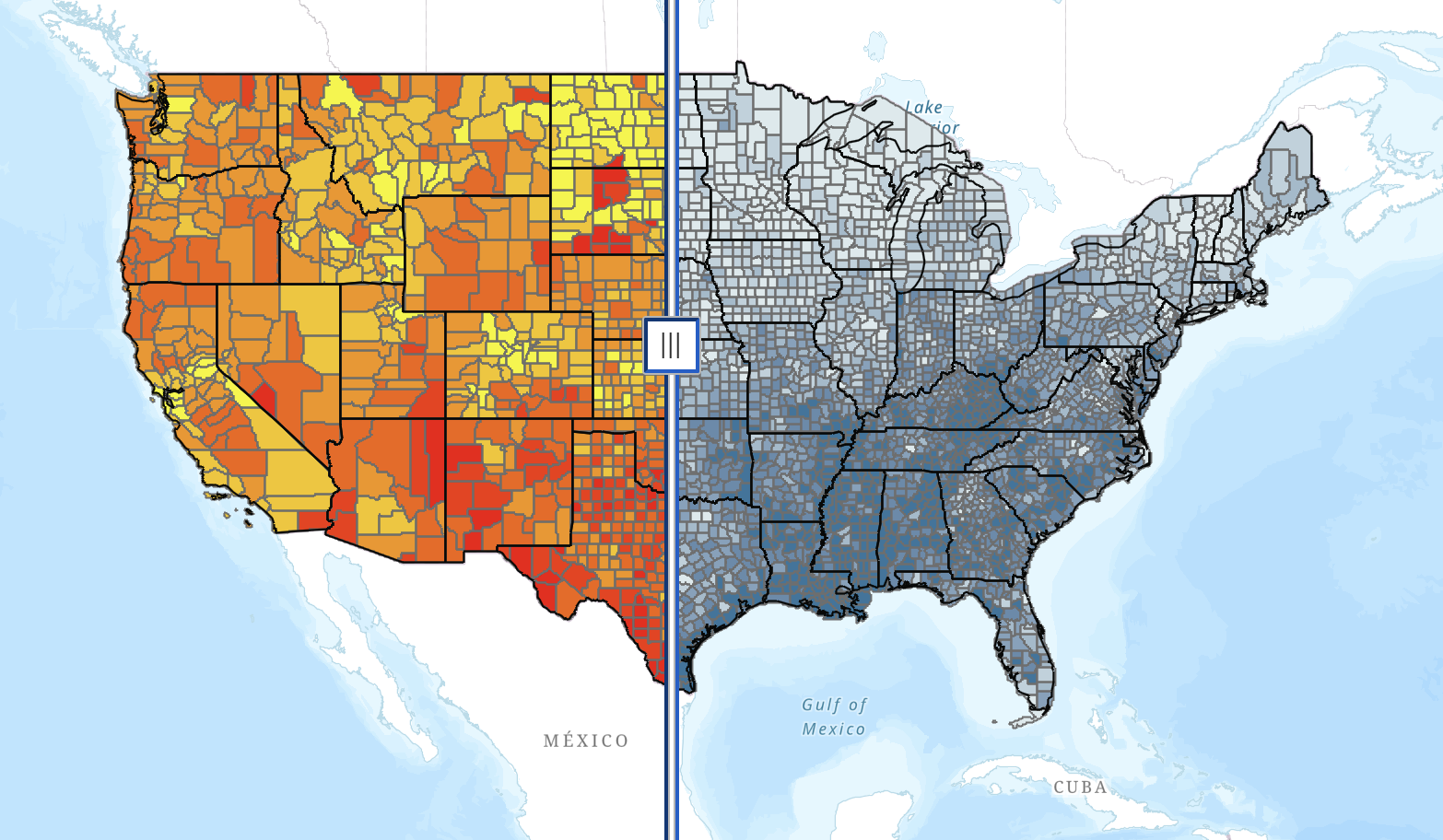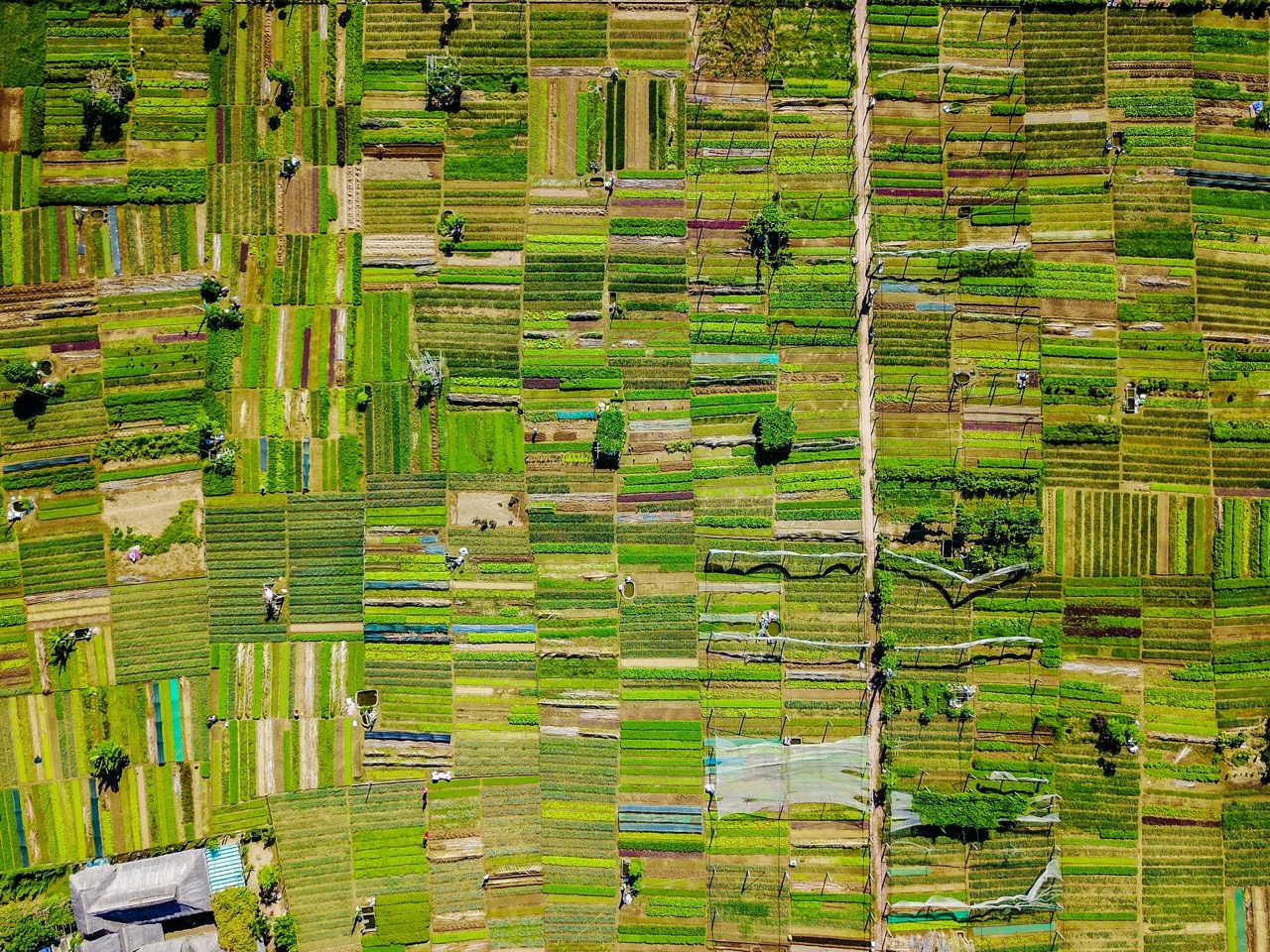For many of us, Thanksgiving is a day we eagerly await each year—when we get to spend time with family and friends over a plentiful feast. Yet, while we load our plates with second servings of turkey and stuffing, millions of Americans across the country cannot afford a meal at all, let alone a turkey dinner. Knowing how many people would be struggling with food insecurity this Thanksgiving did not sit well with us at The Farmlink Project, and, about a month ago, we realized we needed to do something big to help. Committed to our mission of fighting food insecurity, we pledged to do something bigger and more challenging than we have ever done before—a nationwide delivery of one million Thanksgiving meals.
It was not an easy task locating enough turkey and fresh produce to supply a million Thanksgiving meals and coordinating the logistics to get that food to communities in need, but with a full team effort and the help of our generous supporters and volunteers, we are proud to announce that over the last week we have successfully delivered over a million Thanksgiving meals. To accomplish this, we facilitated deliveries spanning across the country in 17 states and Washington, D.C. From coast to coast, members of The Farmlink Project team came out to attend these deliveries and distributions this week, allowing them to see firsthand the hard work of the food banks and organizations we partner with as well as the wide array of families and individuals we serve.
Food insecurity is not a narrow category; it is not limited to only those living in deep poverty in the poorest areas of the United States. Food insecurity pervades this country through and through, afflicting not only the homeless person you passed on the street, but also your next door neighbor who lost their job in the pandemic and can no longer afford both rent and groceries. Food insecurity is not new. It was not created by this pandemic—it was simply exacerbated by it. The scope of what it means to be food insecure has expanded to include those who had never before experienced hardships such as these, many of whom enjoyed a typical Thanksgiving meal only a year ago. This increase in food insecurity motivates us to push forward in our mission and move as much food as we can to those in need. As our co-founder and CEO, James Kanoff, noted, “Everyone deserves a Thanksgiving meal. The Farmlink Project is making sure they get one.
Mission Impossible could never have happened without the dedication of our farmers, hard work of our food banks and community partners, and, of course, the incredible generosity of our supporters. In the spirit of Thanksgiving, we at The Farmlink Project would like to express our deepest gratitude to everyone who made this mission possible.
To read more about Mission Impossible, check out these articles on our Los Angeles, New York City, Washington, D.C., and South Dakota deliveries and distributions.
< Back
For many of us, Thanksgiving is a day we eagerly await each year—when we get to spend time with family and friends over a plentiful feast. Yet, while we load our plates with second servings of turkey and stuffing, millions of Americans across the country cannot afford a meal at all, let alone a turkey dinner. Knowing how many people would be struggling with food insecurity this Thanksgiving did not sit well with us at The Farmlink Project, and, about a month ago, we realized we needed to do something big to help. Committed to our mission of fighting food insecurity, we pledged to do something bigger and more challenging than we have ever done before—a nationwide delivery of one million Thanksgiving meals.
It was not an easy task locating enough turkey and fresh produce to supply a million Thanksgiving meals and coordinating the logistics to get that food to communities in need, but with a full team effort and the help of our generous supporters and volunteers, we are proud to announce that over the last week we have successfully delivered over a million Thanksgiving meals. To accomplish this, we facilitated deliveries spanning across the country in 17 states and Washington, D.C. From coast to coast, members of The Farmlink Project team came out to attend these deliveries and distributions this week, allowing them to see firsthand the hard work of the food banks and organizations we partner with as well as the wide array of families and individuals we serve.
Food insecurity is not a narrow category; it is not limited to only those living in deep poverty in the poorest areas of the United States. Food insecurity pervades this country through and through, afflicting not only the homeless person you passed on the street, but also your next door neighbor who lost their job in the pandemic and can no longer afford both rent and groceries. Food insecurity is not new. It was not created by this pandemic—it was simply exacerbated by it. The scope of what it means to be food insecure has expanded to include those who had never before experienced hardships such as these, many of whom enjoyed a typical Thanksgiving meal only a year ago. This increase in food insecurity motivates us to push forward in our mission and move as much food as we can to those in need. As our co-founder and CEO, James Kanoff, noted, “Everyone deserves a Thanksgiving meal. The Farmlink Project is making sure they get one.
Mission Impossible could never have happened without the dedication of our farmers, hard work of our food banks and community partners, and, of course, the incredible generosity of our supporters. In the spirit of Thanksgiving, we at The Farmlink Project would like to express our deepest gratitude to everyone who made this mission possible.
To read more about Mission Impossible, check out these articles on our Los Angeles, New York City, Washington, D.C., and South Dakota deliveries and distributions.
Mission Impossible: One Million Thanksgiving Meals
50 Deliveries Nationwide
For many of us, Thanksgiving is a day we eagerly await each year—when we get to spend time with family and friends over a plentiful feast. Yet, while we load our plates with second servings of turkey and stuffing, millions of Americans across the country cannot afford a meal at all, let alone a turkey dinner. Knowing how many people would be struggling with food insecurity this Thanksgiving did not sit well with us at The Farmlink Project, and, about a month ago, we realized we needed to do something big to help. Committed to our mission of fighting food insecurity, we pledged to do something bigger and more challenging than we have ever done before—a nationwide delivery of one million Thanksgiving meals.
It was not an easy task locating enough turkey and fresh produce to supply a million Thanksgiving meals and coordinating the logistics to get that food to communities in need, but with a full team effort and the help of our generous supporters and volunteers, we are proud to announce that over the last week we have successfully delivered over a million Thanksgiving meals. To accomplish this, we facilitated deliveries spanning across the country in 17 states and Washington, D.C. From coast to coast, members of The Farmlink Project team came out to attend these deliveries and distributions this week, allowing them to see firsthand the hard work of the food banks and organizations we partner with as well as the wide array of families and individuals we serve.
Food insecurity is not a narrow category; it is not limited to only those living in deep poverty in the poorest areas of the United States. Food insecurity pervades this country through and through, afflicting not only the homeless person you passed on the street, but also your next door neighbor who lost their job in the pandemic and can no longer afford both rent and groceries. Food insecurity is not new. It was not created by this pandemic—it was simply exacerbated by it. The scope of what it means to be food insecure has expanded to include those who had never before experienced hardships such as these, many of whom enjoyed a typical Thanksgiving meal only a year ago. This increase in food insecurity motivates us to push forward in our mission and move as much food as we can to those in need. As our co-founder and CEO, James Kanoff, noted, “Everyone deserves a Thanksgiving meal. The Farmlink Project is making sure they get one.
Mission Impossible could never have happened without the dedication of our farmers, hard work of our food banks and community partners, and, of course, the incredible generosity of our supporters. In the spirit of Thanksgiving, we at The Farmlink Project would like to express our deepest gratitude to everyone who made this mission possible.
To read more about Mission Impossible, check out these articles on our Los Angeles, New York City, Washington, D.C., and South Dakota deliveries and distributions.
.png)








.svg)
.svg)
.svg)